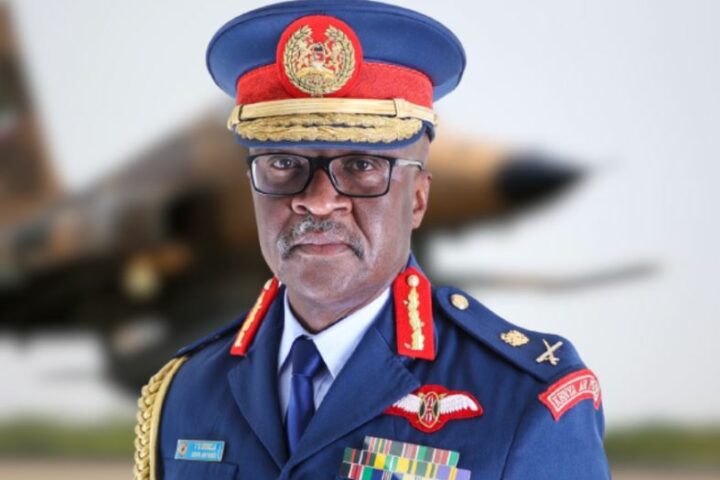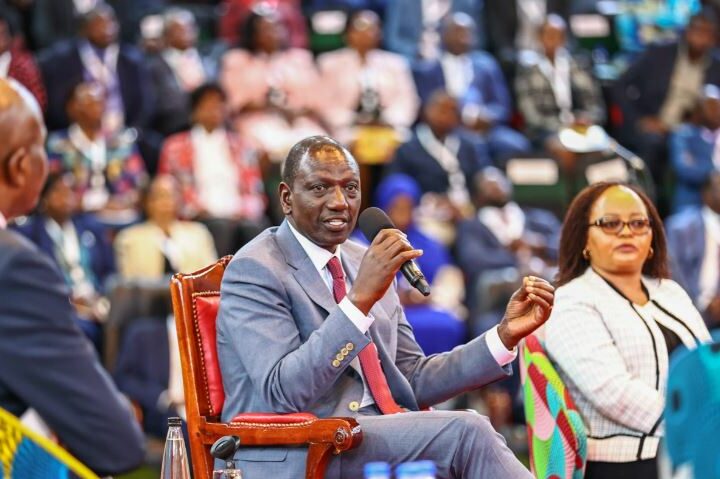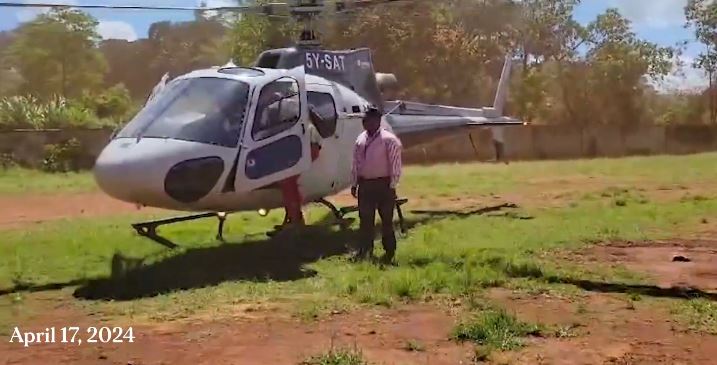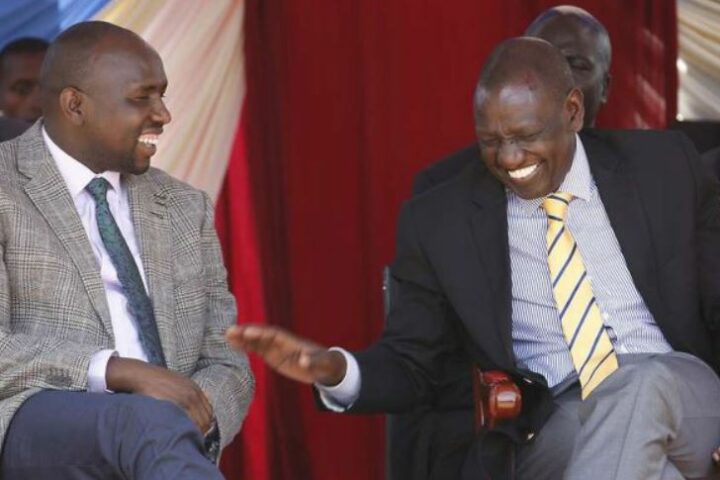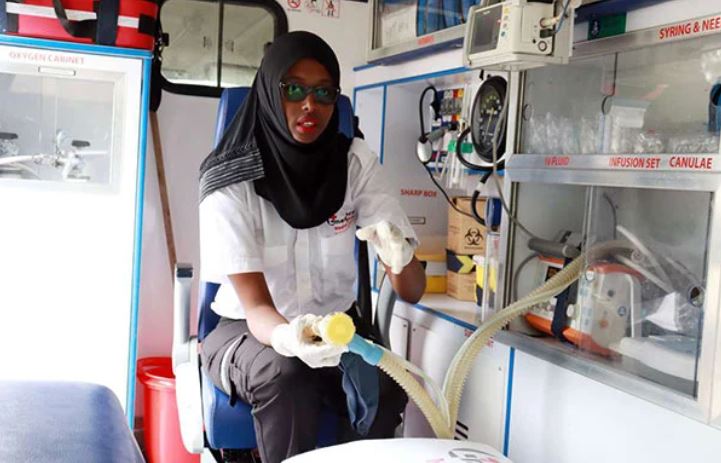
“My name is Zainab Mohammed; I am 29 years old, and work as an emergency medical technician (EMT). I have been one for seven years now.
My office is an ambulance and my job is to save lives. I am one of the EMTs working for the Kenya Red Cross Training Institute as well as EPlus Medical Services, which is affiliated to the Kenya Red Cross.
I have been trained to respond to suspected Covid-19 cases. I am also a trainer, training other EMTs on how to respond to such cases and how to effectively protect themselves as they go about their jobs. An EMT’s training is based on pre-hospital emergencies.
We’re trained in emergency care and how to make use of the environment the patient is in to try to save their life.
When I get to base, at the Kenya Red Cross headquarters in South C, Nairobi, I first inspect the ambulance to ensure that all the equipment and supplies I require for an emergency are present and running.
I then head to the designated area within Nairobi and wait for a call from the dispatcher on duty. Not a day goes by without an emergency.
In a day, I handle a minimum of two emergencies and a maximum of 10. So far I have responded to two suspected Covid-19 cases.
SAFETY FIRST
When a call comes in from the dispatch centre asking us to respond to a suspected Covid-19 emergency, the case will have already been reported to the Ministry of Health, who will either have received a call from the person requesting evacuation or will have tracked the case themselves.
When we arrive on the scene, the first thing we do is don our personal protective equipment (PPEs) before approaching the patient.
The minimum PPEs are composed of a mask and gloves, while the full gear is made up of a mask, gloves, goggles, gown coverall and covers for the boots. The goggles can be recycled, but the rest are disposed of after use.
We then offer the person a sanitiser to sanitise their hands with and a mask to wear — the aim of this is to minimise cross contamination.
We then lead them to the back of the ambulance, where we take their vital signs, which include the temperature, heart rate and breathing rate, with temperature being the most important.
If the patient is stable, we simply monitor the vital signs and reassure them. For an unstable patient, with, say, respiratory distress, we give them oxygen, and if the patient goes into respiratory failure and is not able to breath for themselves, we do ventilation, since the ambulance is fitted with a ventilator.
TAG TEAM
An EMT can perform basic advance life support skills, which, among other skills involves clearing the patient’s airway, ventilation, and intubating the patient — this involves the insertion of a breathing tube into the patient’s trachea for mechanical ventilation.
The guidelines from the Ministry of Health state that if the patient is stable, meaning that they can walk, talk and breath on their own, they are to sit in the back of the ambulance alone to minimise cross-infection since the compartment is closed.
In cases where the patient is unstable, you have to sit at the back with them to monitor and stabilise them.
Once we have attended to the patient, we take him to a designated hospital picked by the Ministry of Health.
We’re normally a team of two responders, the EMT and the ambulance operator, who is trained in basic life support skills. It’s a tag team.
After I get the patient to the hospital, I remove my PPEs and properly dispose them. There is a healthcare worker at the hospital assigned to disinfect the ambulance.
We then wear fresh protective gear and clean the ambulance again in readiness for another call that may come in.
At the end of our shift, we take the ambulance back to base, to the decontamination area, where the procedure of disinfection and cleaning is repeated.
I then take off my PPEs and my uniform and take a shower before putting on my personal clothes and head home.
Though rigorous, I find this process reassuring because I am married and have a child; therefore, it is not just my well-being to consider, but that of my family as well. Mine is a 12-hour shift: I clock in at 7 am and clock off at 7 pm.
Courtesy: Nation.co.ke
